Walt Disney: how a humble cartoonist changed the world
Discover the man behind Mickey and co
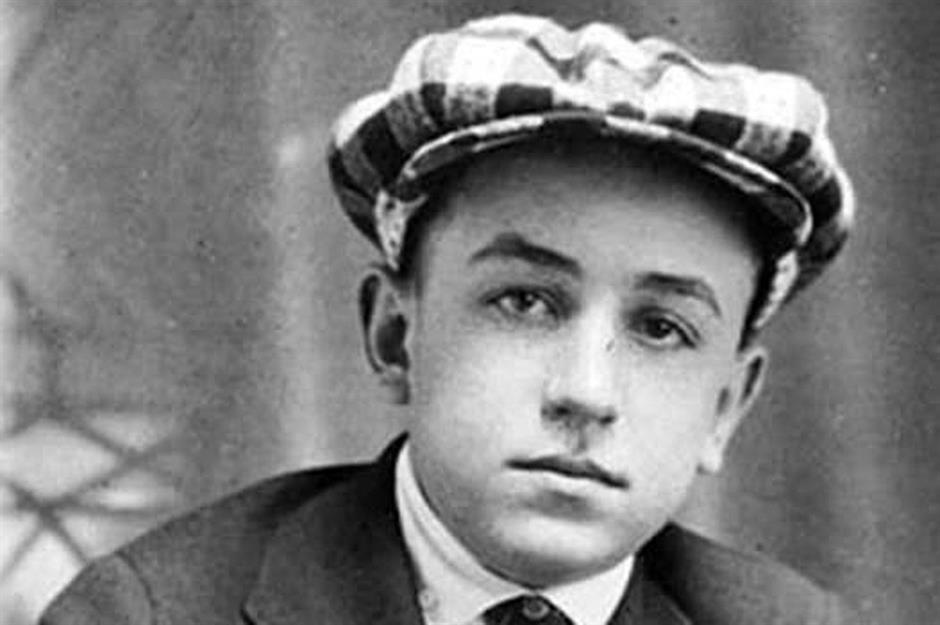
A global icon whose wonderful imagination has shaped pop culture, Walt Disney was a true visionary. From pioneering animated movies to revolutionising the theme park experience, the creative genius transformed storytelling and built one of the world's biggest and most successful entertainment and media juggernauts.
From humble origins to immense wealth, read on to discover how the great imagineer made the magic happen.
All dollar amounts in US dollars.
Modest beginnings
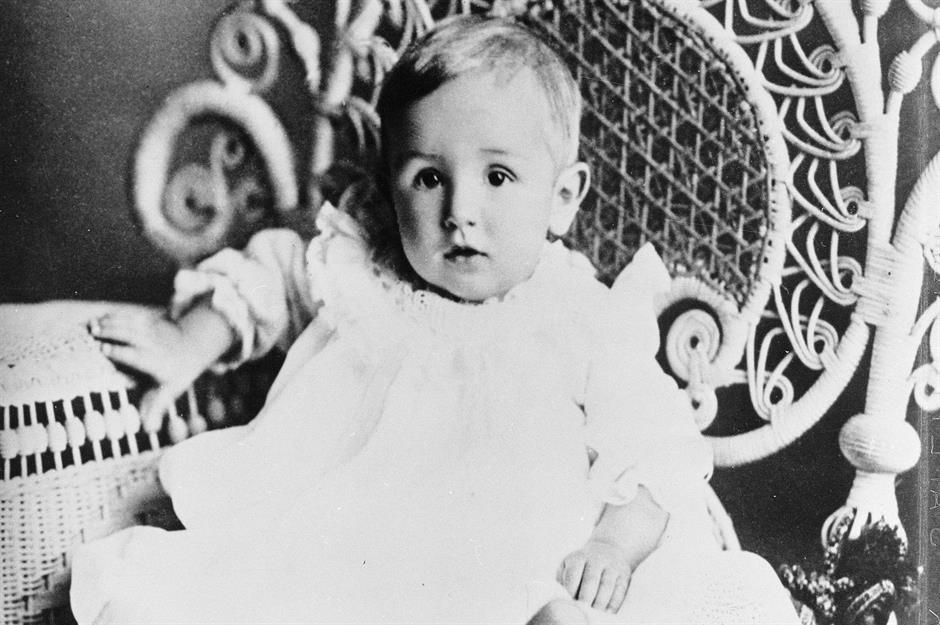
Walter Elias Disney was born in Chicago on 5 December 1901, the fourth of five children. Walt's childhood was challenging. Despite endlessly toiling away, his father Elias struggled to provide for the family, flitting from one failed venture to another. A dour disciplinarian, he was all work and no play.
Thankfully, Walt's mother Flora brought much-needed cheer and actively encouraged her children's creativity. In 1906, the Disneys relocated to a forty-acre farm in Marceline, Missouri.
Walt's happy place
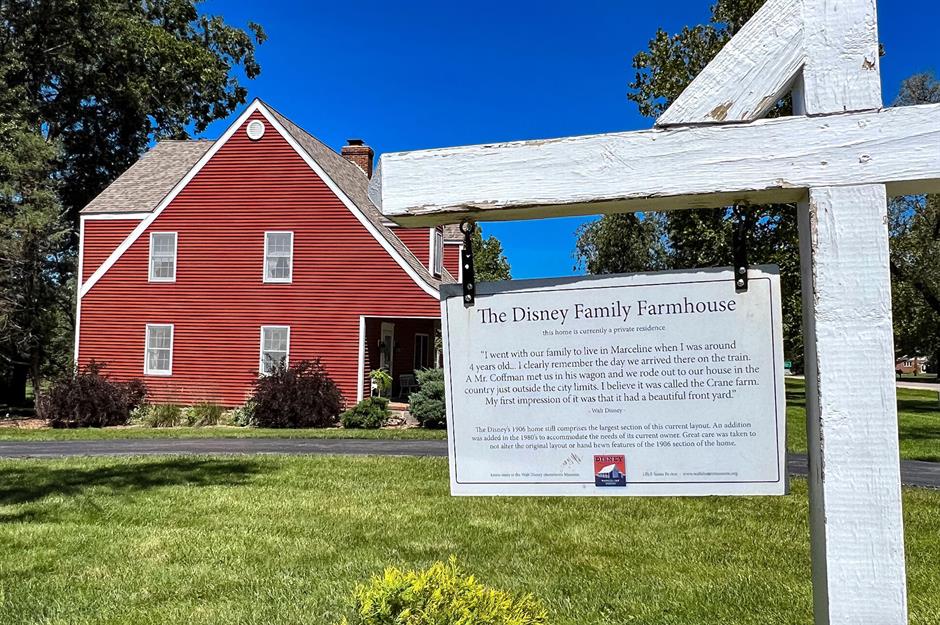
Amid his difficult childhood, Marceline became Walt's happy place, with the town later serving as the model for Disneyland's Main Street, USA. Encouraged by Flora, Walt showed a remarkable talent for drawing and painting from an early age and was garnering paid commissions from his neighbours by the age of seven. But it was by meticulously copying newspaper cartoons that the future animator discovered his true calling.
The family's time in Marceline was relatively fleeting. In 1911, Elias, who was sick with typhoid and facing yet more failed ventures, moved the family to Kansas City, where he bought a newspaper delivery route.
The Kansas City grind
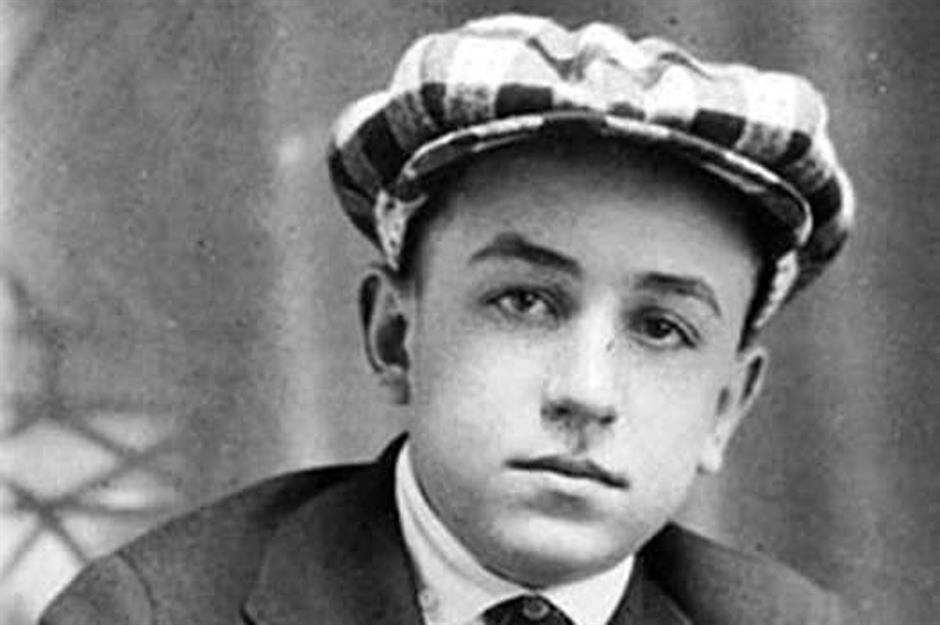
Elias roped in Walt and his brother Roy as paperboys, inflicting a punishing schedule on his sons. Their days began with deliveries at 3:30 am, followed by school and sometimes more deliveries.
Walt devoted what little spare time he had to hanging out with his best buddy Walter Pfeiffer, who introduced him to the glittering worlds of Vaudeville and motion pictures. He also managed to squeeze in Saturday courses at the Kansas City Art Institute, as well as a correspondence course in cartooning.
Arty endeavours, war and Ub
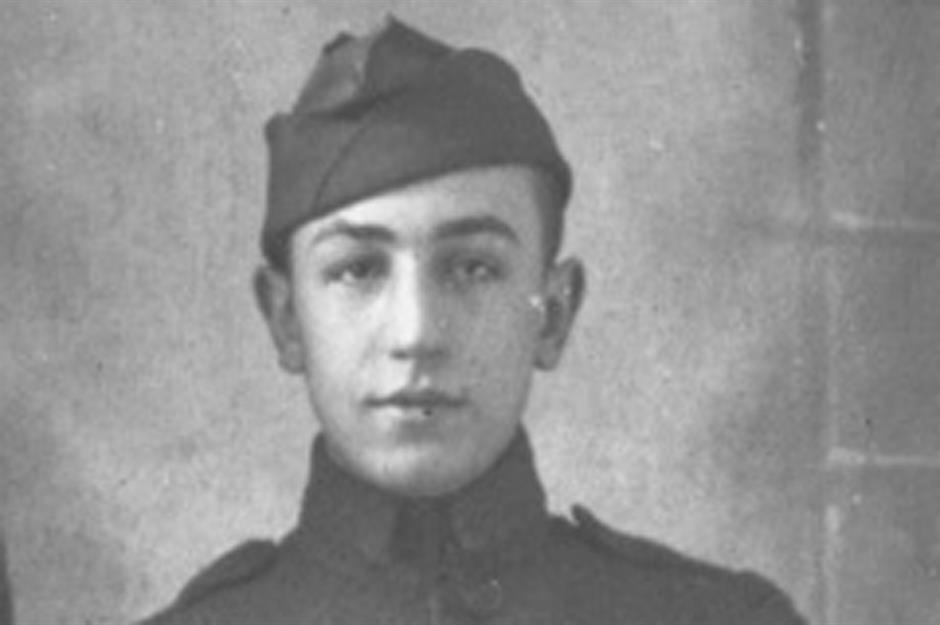
In 1917, the Disneys moved back to Chicago. With his sights firmly set on becoming a newspaper cartoonist, Walt contributed his scribbles to the high school paper and took night courses at the Chicago Academy of Fine Arts.
After attempting to enlist in the US Army to fight in World War I, Walt served as a Red Cross ambulance driver in France in 1918. He returned to Kansas City in 1919 and landed an apprenticeship at a commercial art studio. There, he met his lifelong collaborator, Ub Iwerks.
Laugh-O-Gram Studios fail
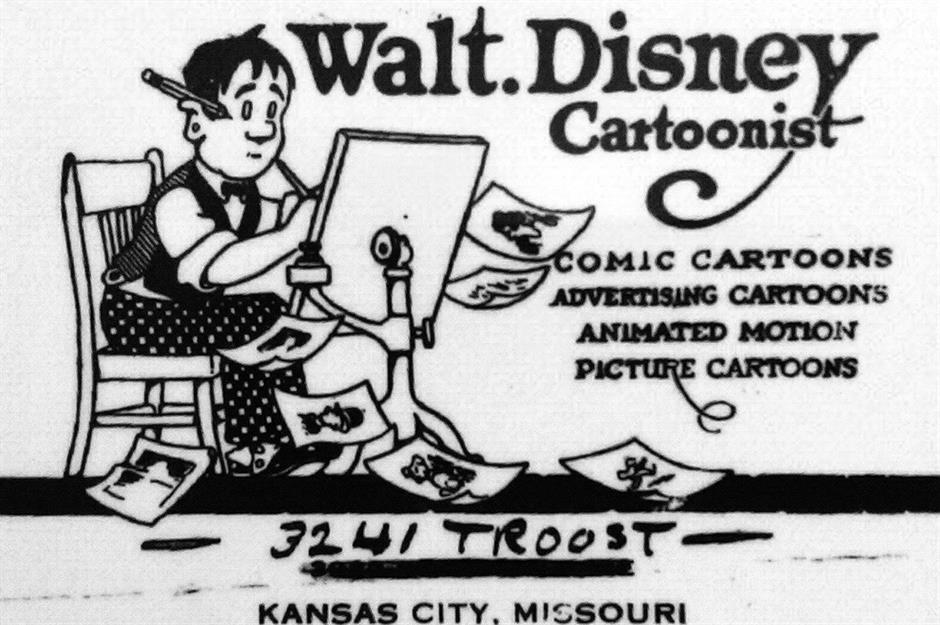
The duo was laid off in the winter of 1919 and decided to start their own studio. But with finances tight, Walt had to take a job as a commercial artist. Around this time, he started experimenting with animation and began to realise its boundless potential.
Together with Ub, Walt created a series of Laugh-O-Gram shorts that went down a storm. Walt quit his job and founded Laugh-O-Gram Studios in 1922. But the business crashed and burned. A big commission fell through, and even Alice's Wonderland, a groundbreaking idea for a short film combining animated characters with live action, failed to save the firm. Facing financial ruin, Walt made a move in July 1923 that would change his life and, ultimately, the world.
A new start in Hollywood
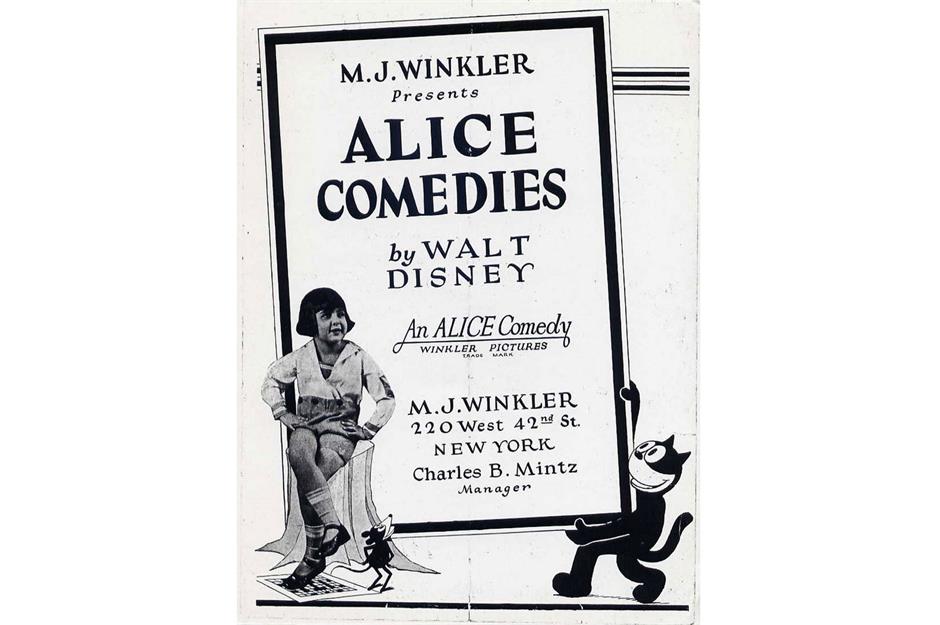
With just $40 (the equivalent of $750/£555 today) to his name, 21-year-old Walt made a beeline for Hollywood where he joined his brother Roy, who was recovering from tuberculosis.
Disillusioned with cartoons by this point, Walt wanted to be a live-action movie director. In the end, New York distributor Margaret Winkler snapped up Alice's Wonderland and commissioned the Alice Comedies under a contract worth $1,500 ($28k/£20.7k today) per reel. The ambitious concept of featuring a live-action 'Alice' in an animated world was a first, and over time 56 Alice films were created.
To produce these films, Walt teamed up with Roy, and on 16 October 1923, the pair founded the Disney Brothers Cartoon Studio, the precursor to the Walt Disney Company.
Building the Disney dream
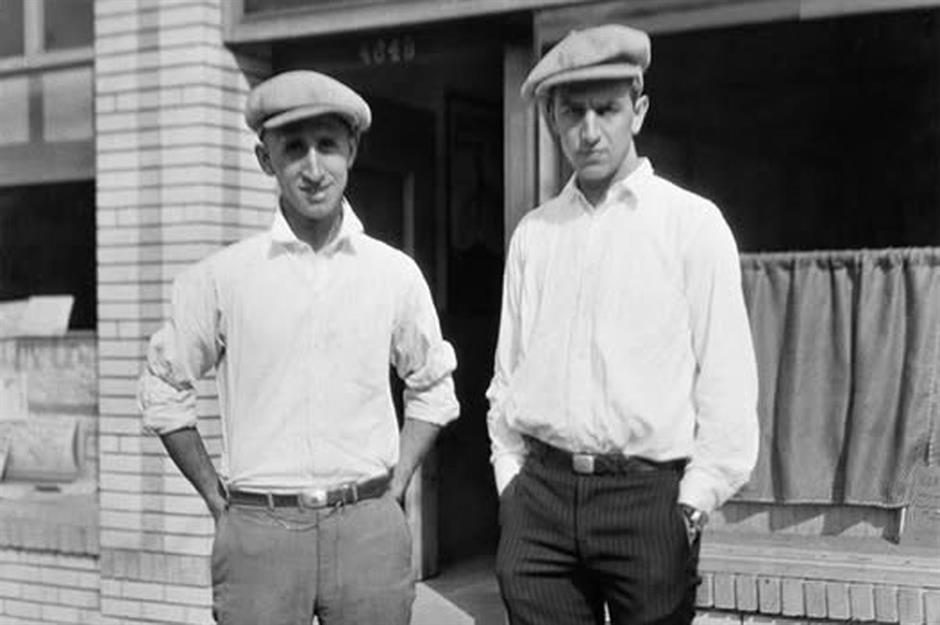
Roy (pictured left) handled the business side of things, while Walt, by all accounts a micromanaging perfectionist, poured his heart and soul into the creative process. The studio started small, initially in their uncle's garage, then at the back of a real estate office on Kingswell Avenue in LA's Los Feliz neighbourhood. The brothers began expanding their team almost immediately.
In 1924, the pair brought Ub aboard and hired a talented ink artist named Lillian Bounds. She and Walt became romantically involved, and they tied the knot the following year. The couple had one biological daughter, Diane, who was born in 1933, and they adopted Sharon in 1936.
The Oswald the Lucky Rabbit saga
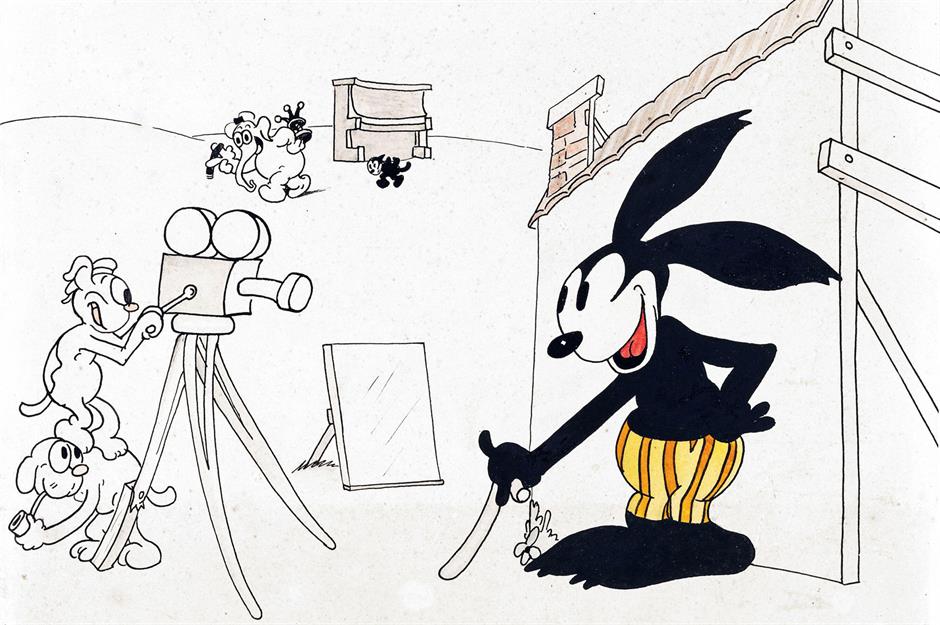
In 1926, the business relocated to larger premises on Hyperion Avenue and was renamed the Walt Disney Studio. Margaret Winkler's husband, Charles Mintz, took control of the Disney contract and asked Walt and Ub to create a new character.
They delivered Oswald the Lucky Rabbit. The cheeky character was a surprise hit. However, when Walt travelled to New York in 1928 to negotiate a higher fee, Mintz demanded he take a pay cut instead. As it turned out, Mintz had secretly acquired the rights to the character and had gone behind Walt's back to poach Disney animators, intending to start his own studio to produce the Oswald cartoons.
A fortunate betrayal
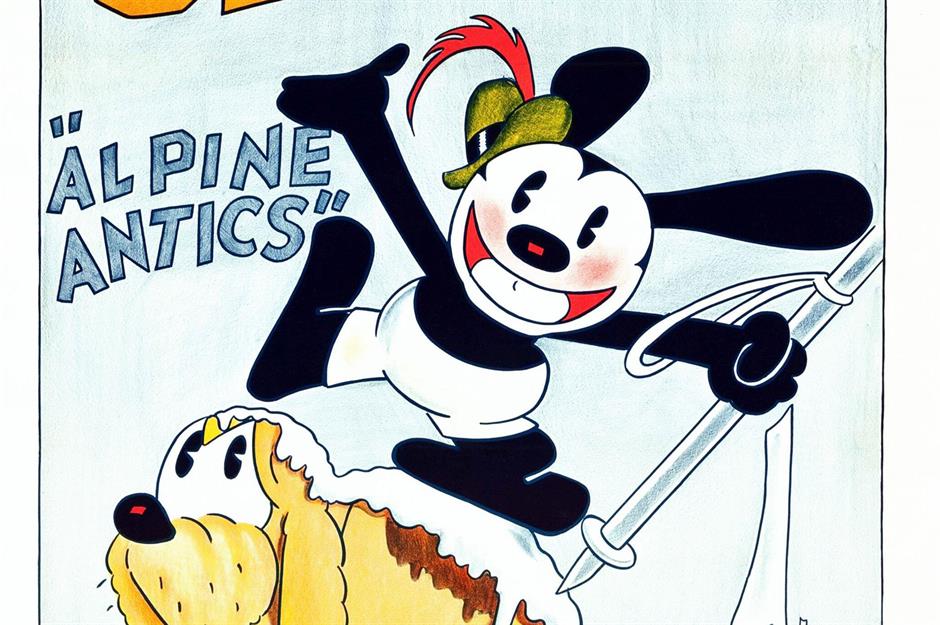
Crestfallen, Walt threw in the towel and washed his hands of Oswald. The blow was devastating, but proved incredibly lucky in hindsight since it taught him a valuable lesson about intellectual property rights and the importance of fully owning his creations. The saga also set the stage for Disney's biggest icon.
On the train back from New York, Walt came up with the idea of creating a new character he would have total control of.
Creating Disney's most iconic character
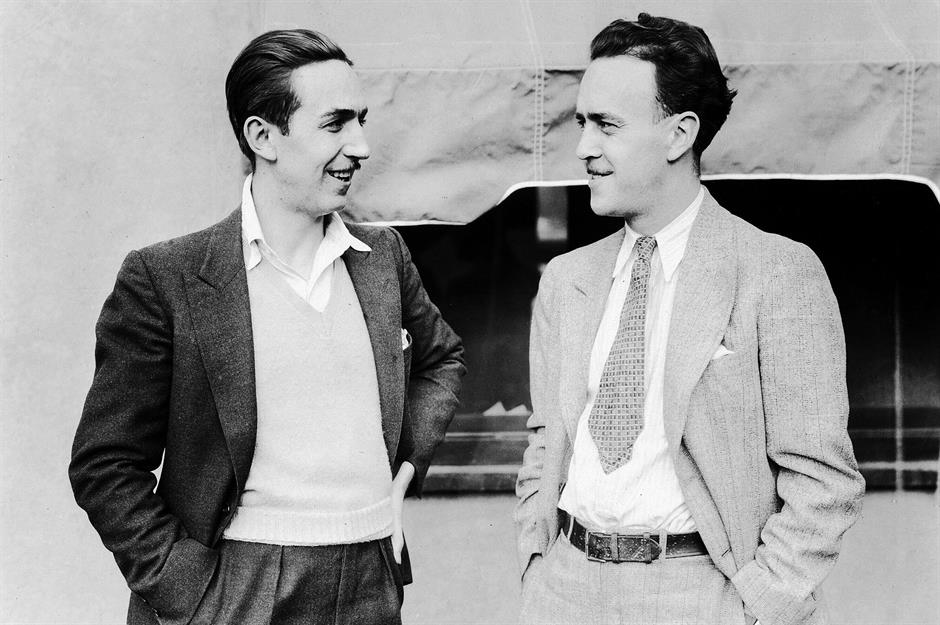
Recalling with fondness a plucky little rodent called Mortimer he adopted in his studio in Kansas City, Walt settled on a mouse. Back in LA, Walt got to work on the new character with Ub, his loyal friend and the only Disney animator who refused to defect to Mintz's proposed studio.
Ub gave the creation “form and movement”, according to one eminent biographer, while Walt provided the rest.
A legend is named
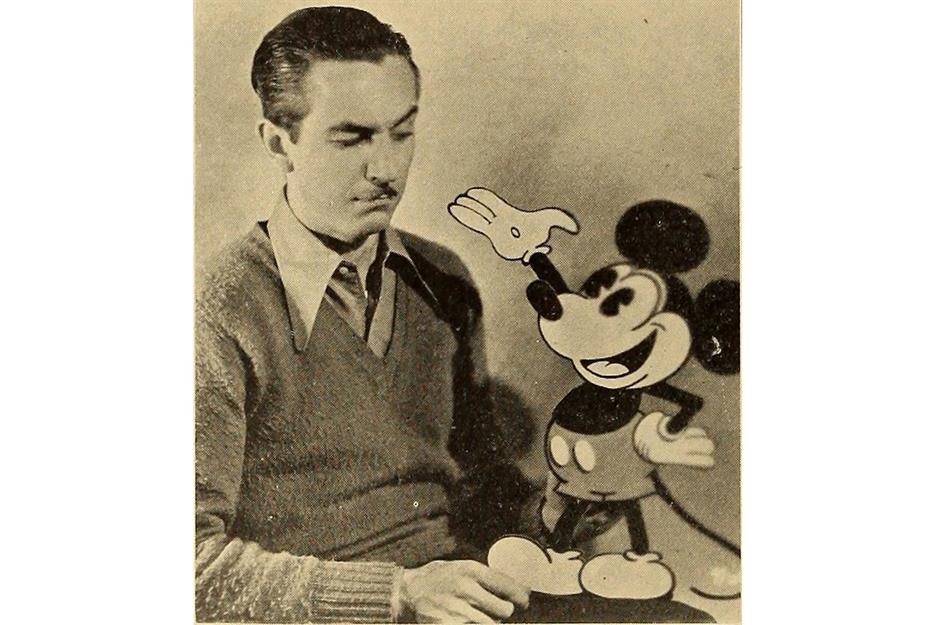
In any case, the early incarnations of the new character bore more than a passing resemblance to Oswald the Lucky Rabbit. With the concept figured out, Walt just had to come up with a name. He initially stuck with Mortimer, but the moniker didn't go down well with his wife, Lillian, who thought it was too pompous.
She suggested the more down-to-earth Mickey, and a legend was born.
Mickey Mouse's grand entrance

Mickey first appeared in the 1928 silent short Plane Crazy together with love interest Minnie, who was based on a Roaring Twenties flapper. The film failed to pick up a distributor but Mickey burst onto the scene later that year, making his public debut in the massively popular Steamboat Willie.
While not the first cartoon with sound, it was the first widely released animated film to feature fully synchronised audio: voices, effects and a musical score. It stands as a testament to Walt's eagerness to embrace new technology and take audacious risks.
A Silly Symphony of success
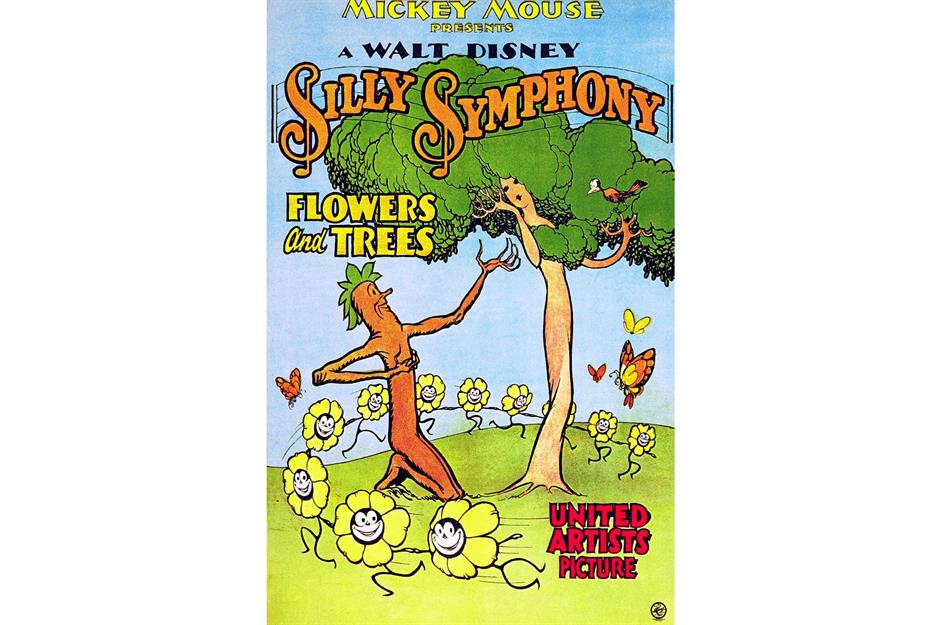
In 1929, the renamed Walt Disney Productions launched the Silly Symphony series, which introduced beloved characters like Donald Duck. The shorts made pioneering use of Technicolor, and in 1932, Walt won his first competitive Academy Award for Flowers and Trees, Disney's debut colour cartoon.
He also won his first honorary Oscar that year for creating Mickey Mouse. Over the course of his life, Walt racked up 22 Academy Awards and four honorary gongs in total, more than any other person.
Disney's Great Depression tonic
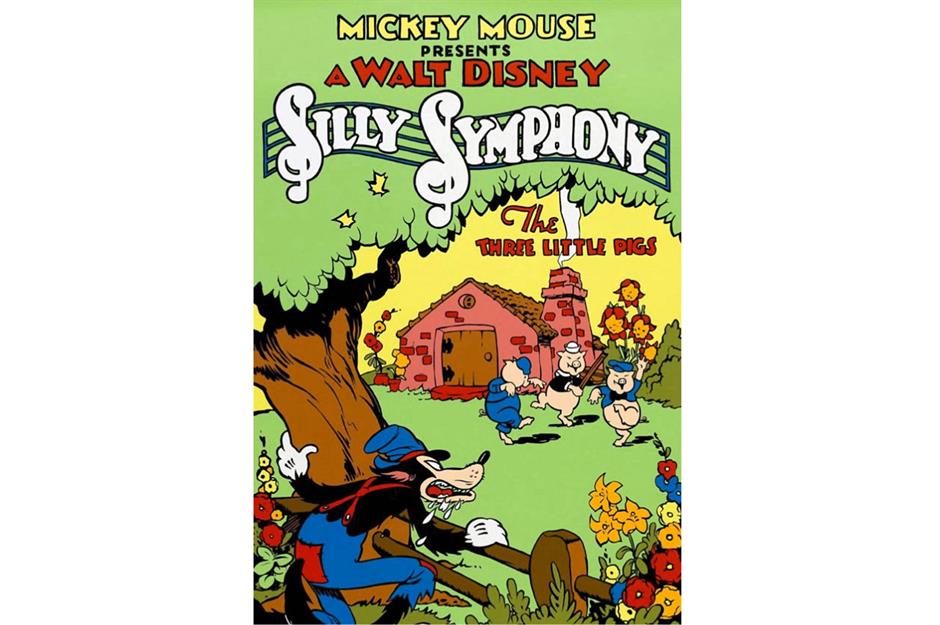
Running until 1939, the Silly Symphony series was a morale-booster for Americans beleaguered by the Great Depression, drawing enormous crowds to screenings.
In 1933, Disney released Three Little Pigs. It grossed more than 10 times its budget of $22,000 ($544k/£409k today) and is considered the most successful animated short of all time. The film's signature song, Who's Afraid of the Big Bad Wolf?, became an anthem of resilience and hope for a suffering nation.
Walt's animation breakthrough and Mickey's redesign

Always striving for greater realism, Walt revolutionised animation in 1937 when he led the development of the multiplane camera. This clever machine stacked drawings on moving layers, making flat cartoons look wonderfully 3D and adding depth.
In 1938, Mickey Mouse was redesigned by animator Fred Moore, who added pupils to his eyes, more or less creating the version we know and love today. This willingness to evolve Mickey showcased Walt's openness to change and constant pursuit of artistic refinement.
Disney's Snow White gamble
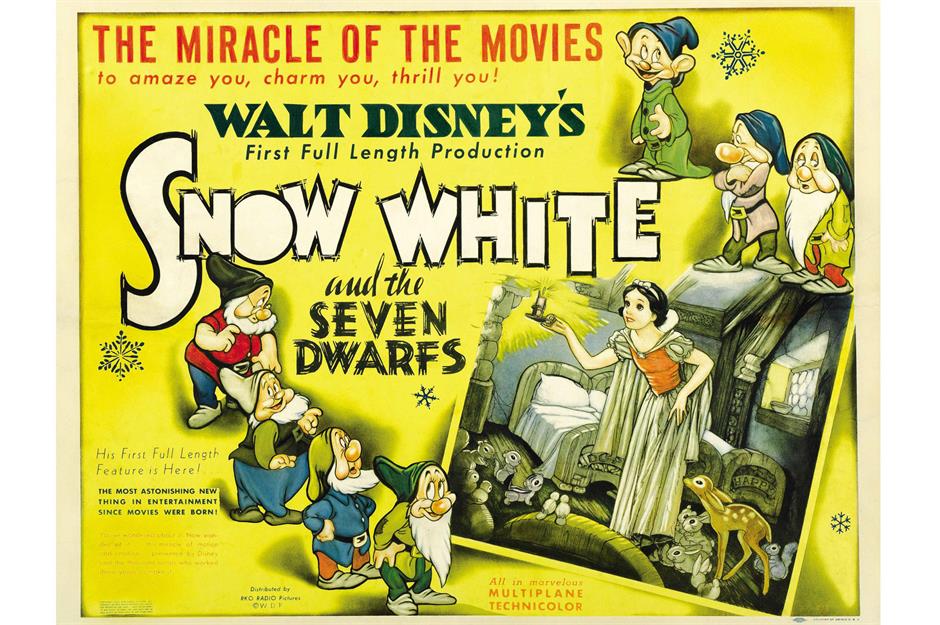
In 1937, amid widespread industry scepticism, Walt embarked on Snow White and the Seven Dwarfs, the world's first full-length animated feature film. Making stellar use of the revolutionary multiplane camera, the project pushed the studio's financial limits. The movie was dubbed 'Disney's Folly' due to its exorbitant budget of $1.5 million ($35m/£26m today) and the immense gamble it represented.
Yet Walt's unwavering belief in the emotional power of a feature-length animated story paid off spectacularly. Snow White premiered to critical acclaim, proving animation could sustain complex narratives and profoundly appeal to adults, permanently changing the film industry.
A record-breaking triumph and merch trailblazer
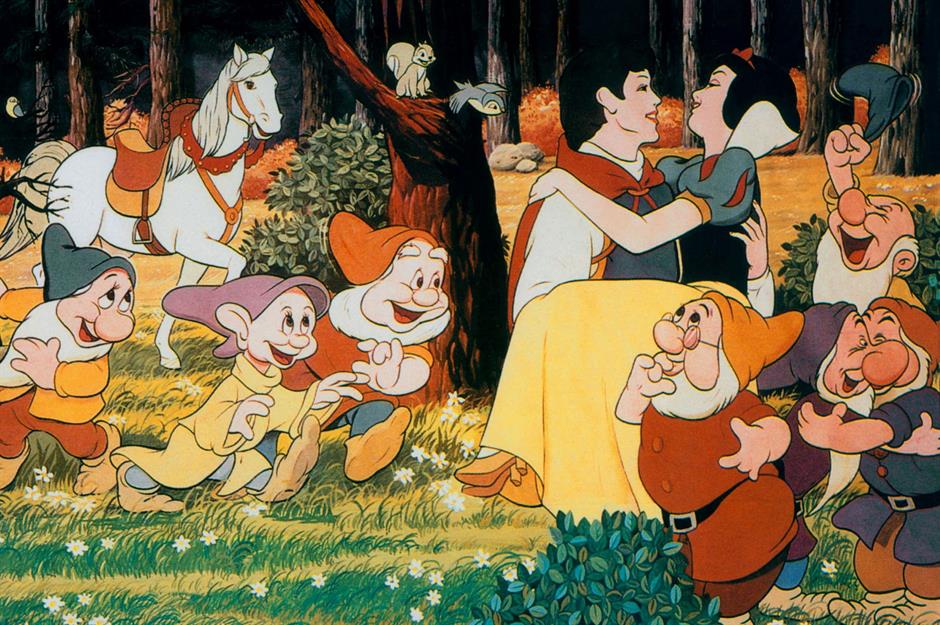
Snow White's commercial success was unprecedented. The film made over $8 million ($185m/£137m today) during its initial release – more than five times its budget – becoming the highest-grossing American movie. Its global reach extended to 49 countries, establishing Disney as an international household name.
Beyond transforming animation, the film pioneered extensive merchandise, spawning more than 2,183 different products. This effectively birthed the global Disney empire as a powerful marketing and licensing force.
Disney's wartime slump
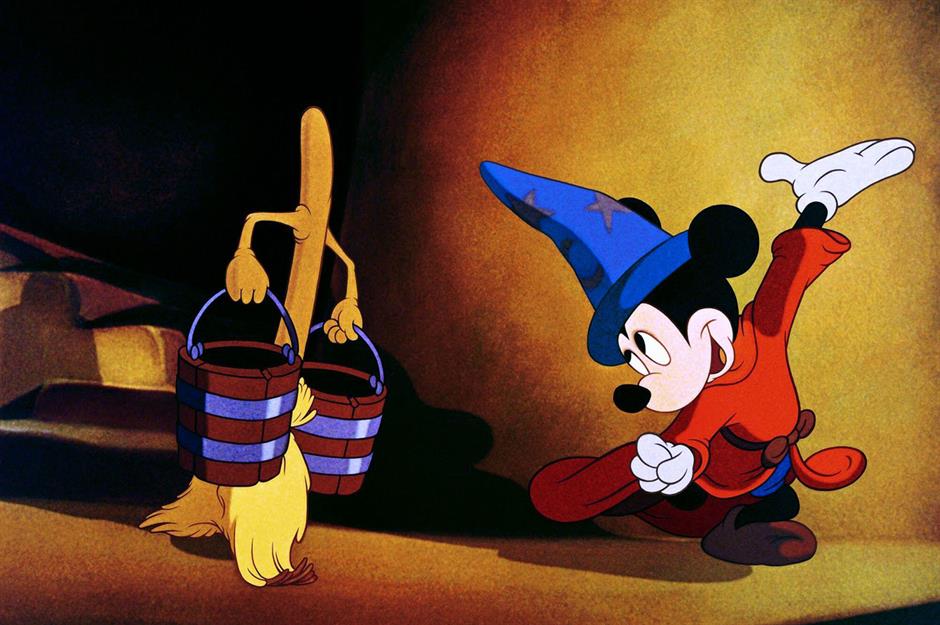
Despite the incredible success of Snow White, Disney faced grave financial challenges in the early 1940s. The studio produced some of its most critically acclaimed full-length classics during this period, from Pinocchio to Fantasia and Bambi, but they performed poorly at the box office as the Second World War raged. The cheaply-made Dumbo was the studio's sole commercial success.
Always swift to adapt, Walt's company became heavily involved in the war effort, producing a vast quantity of propaganda films, educational shorts and other compelling content for the US government and armed forces.
Disney's postwar revival
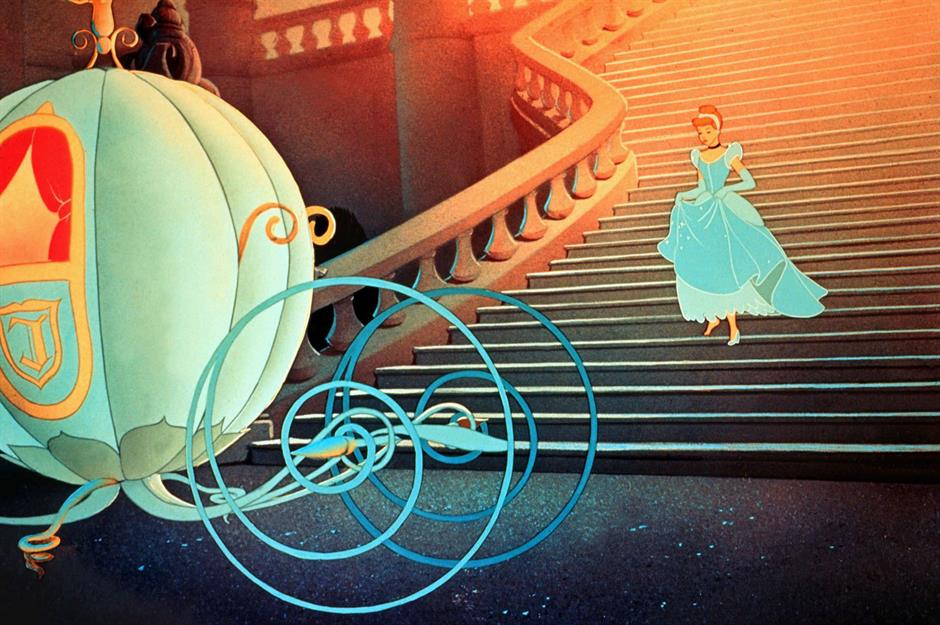
After a decade of disappointments, Disney made a sensational comeback in 1950 with Cinderella. The studio's first animated feature since Bambi eight years prior, it enchanted audiences worldwide.
Against a budget of $2.2 million ($29m/£21m today), Cinderella grossed $8 million ($107m/£79m today) in its first year of release alone, making it one of Disney's most profitable pictures. The studio delivered more animated smash hits during the 1950s, including Peter Pan and Lady and the Tramp. But the decade also saw Alice in Wonderland and the mega-expensive Sleeping Beauty bomb at the box office. They did, however, go on to become cherished classics, earning fat profits over time.
Venturing into live-action movies
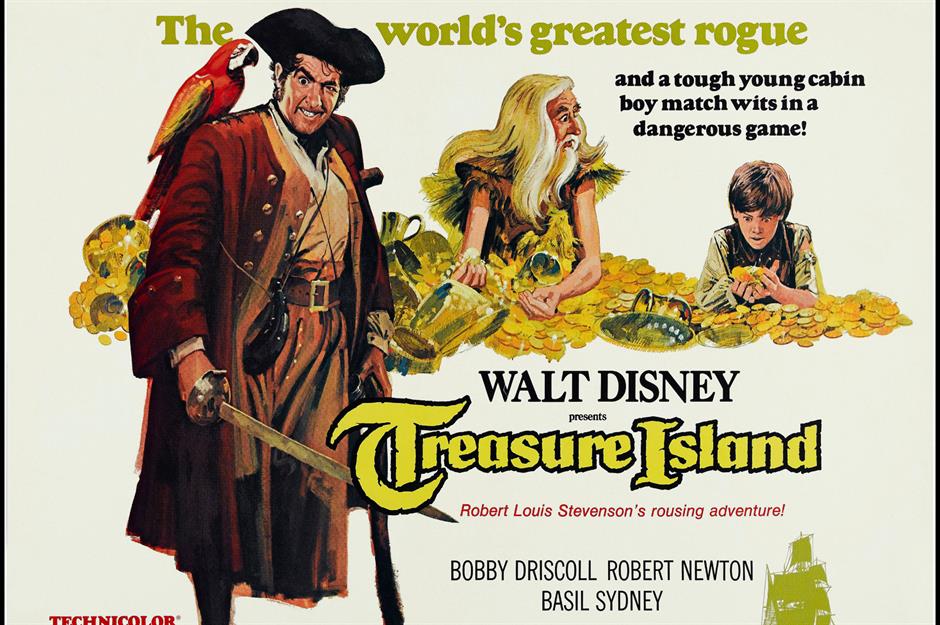
Playing a crucial role in Disney's postwar revival was its move into live-action feature filmmaking, a major shift for a studio renowned for its animation. Walt was prompted to take the plunge following the 1941 animators' strike, but it wasn't until 1950 that Disney released its first full-length, live-action movie, the swashbuckling Treasure Island. The movie was a box office hit, particularly in the UK.
The blockbuster's success spurred Disney to release many more live-action features that decade, from historical epics to sci-fi adventures featuring cutting-edge special effects. These included 1954's 20,000 Leagues Under the Sea.
Tapping into TV's amazing potential
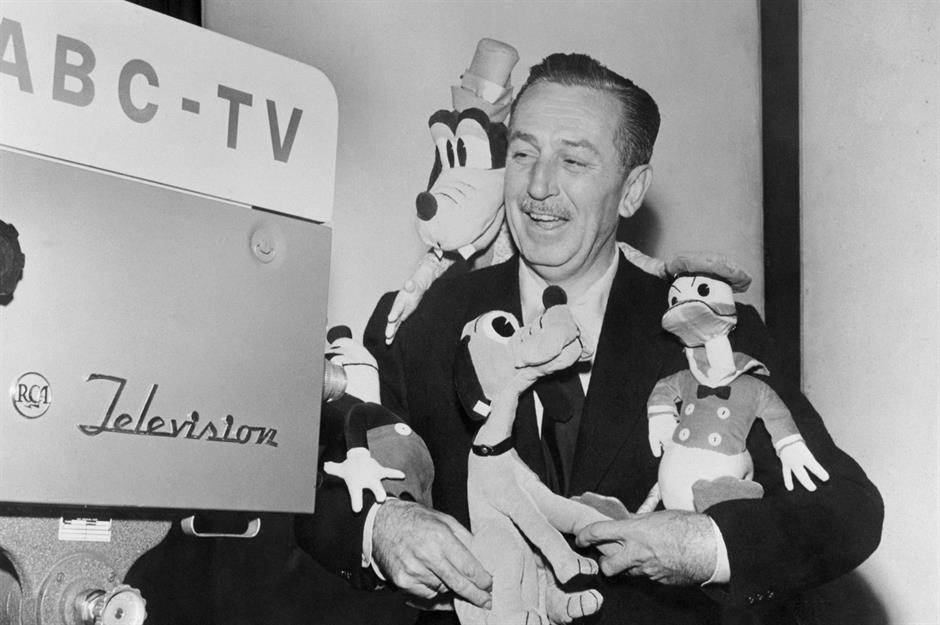
Unlike most of Hollywood, which viewed TV as a threat, Walt Disney saw it as an exciting new marketing opportunity and storytelling medium. Crucially, he realised TV could help fund and promote his most ambitious venture yet: a magical theme park unlike any other. Walt had come up with the idea in the 1930s while watching his daughters ride the Merry-Go-Round in LA's Griffith Park.
In 1954, Disney forged a momentous deal with ABC, in which the TV studio helped finance the theme park in exchange for a weekly show that ingeniously promoted the project. This successful cross-media synergy was followed by the launch of The Mickey Mouse Club in 1955, further cementing Disney's brand connection with audiences of all ages.
Disneyland opens
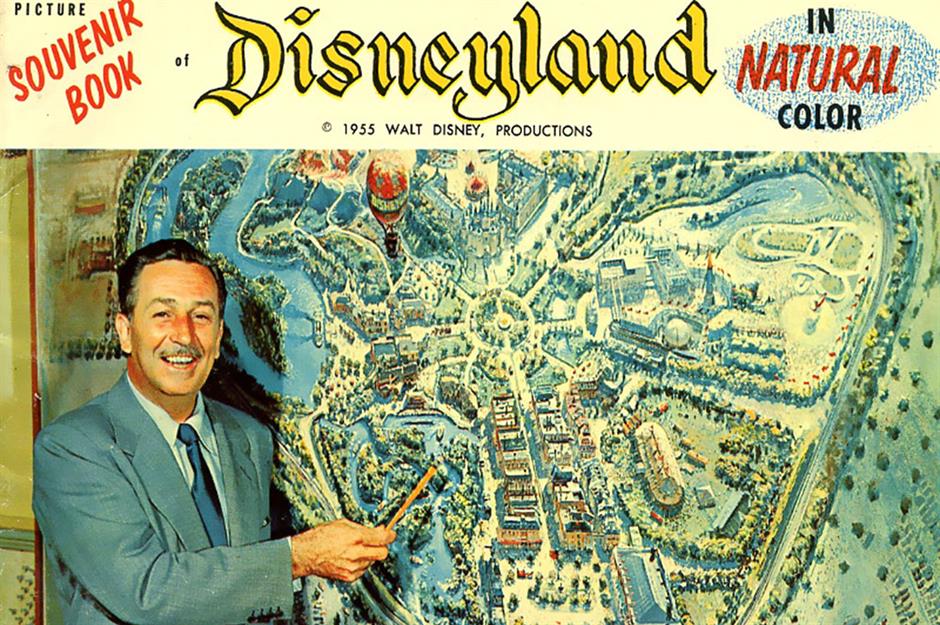
Disneyland opened on 17 July 1955 in Anaheim, California at a cost of $17 million ($204m/£151m today). Overseen by Walt down to the finest detail, it was an extraordinary innovation. Unlike conventional amusement parks, which were merely a collection of rides, Disneyland was envisaged as an immersive 'magical kingdom' where families could explore fantastical realms in a clean and safe environment.
Despite a disastrous opening day, the park quickly overcame its initial challenges, welcoming a million visitors within weeks.
Disney's diversified empire and continued success
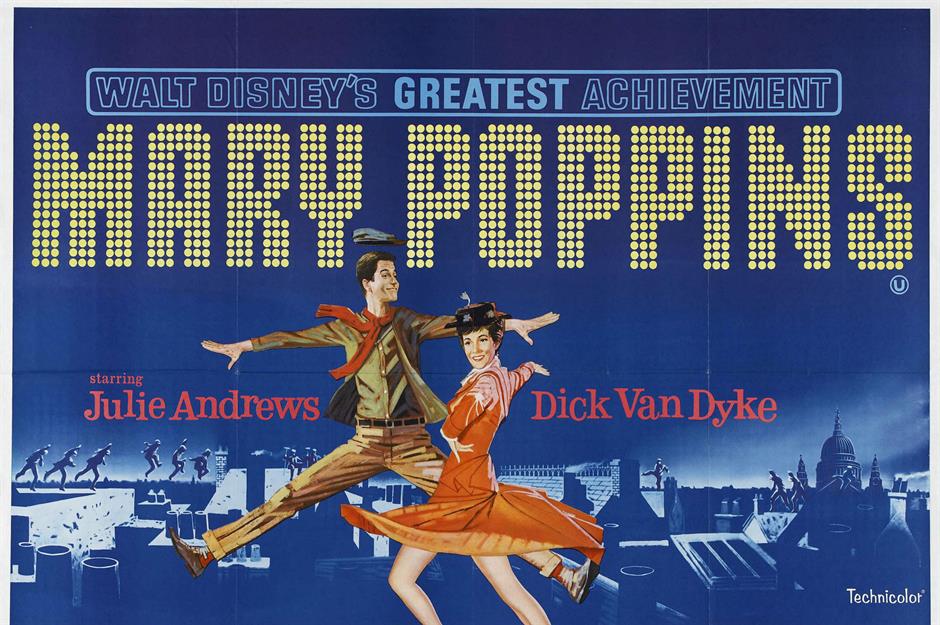
By the 1960s, Disney had solidified its position as a diversified entertainment empire, having successfully expanded beyond animation into live-action film, TV and the exceedingly popular Disneyland theme park.
The box office hits kept on coming. In 1961, Disney released One Hundred and One Dalmatians, which became the first animated feature to make over $10 million ($108m/£80m today) during its original run. Then, in 1964, the studio debuted Mary Poppins. The live-action/animated sensation was the highest-grossing film that year in America and won five Academy Awards.
Walt's visionary external projects
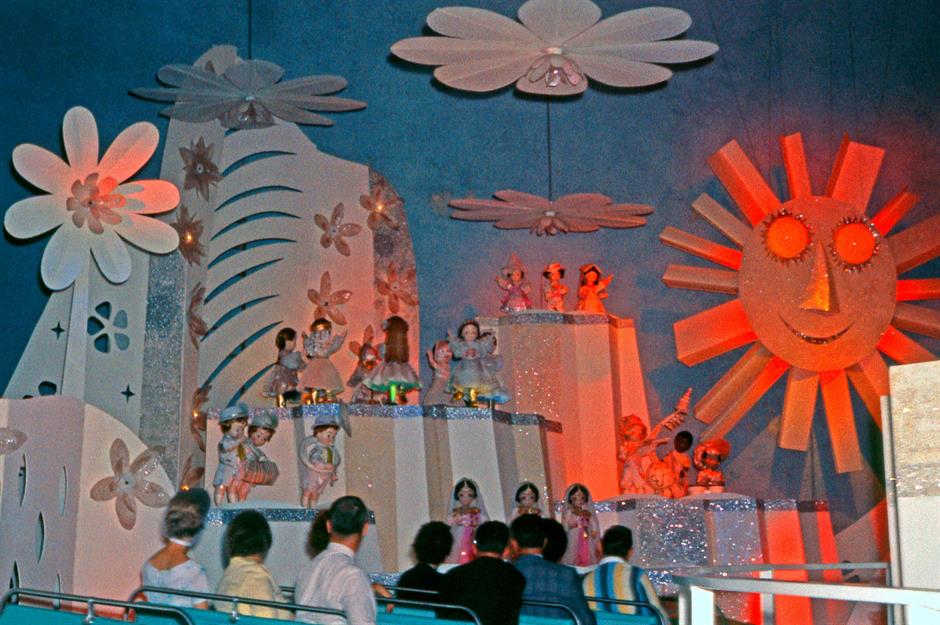
The ultimate imagineer put his visionary talents to use beyond Disney in the late 1950s and early 1960s. He worked on the 1959 Moscow Fair and 1960 Winter Olympics, and his team contributed four attractions to the 1964 New York World's Fair, including It's a Small World, which was eventually moved to Disneyland.
These projects helped Disney perfect animatronics and large-scale show systems, gaining vital experience for future theme park developments.
Walt Disney World

Walt's grandest and most ambitious vision was the Florida Project: an expansive, secretly acquired tract of land in Central Florida in 1964 that would become Walt Disney World.
Walt's plan far exceeded Disneyland, encompassing not just a larger theme park, but an entire Experimental Prototype Community of Tomorrow (EPCOT). This visionary city was designed as a living laboratory for urban planning and innovation.
Walt's many accolades
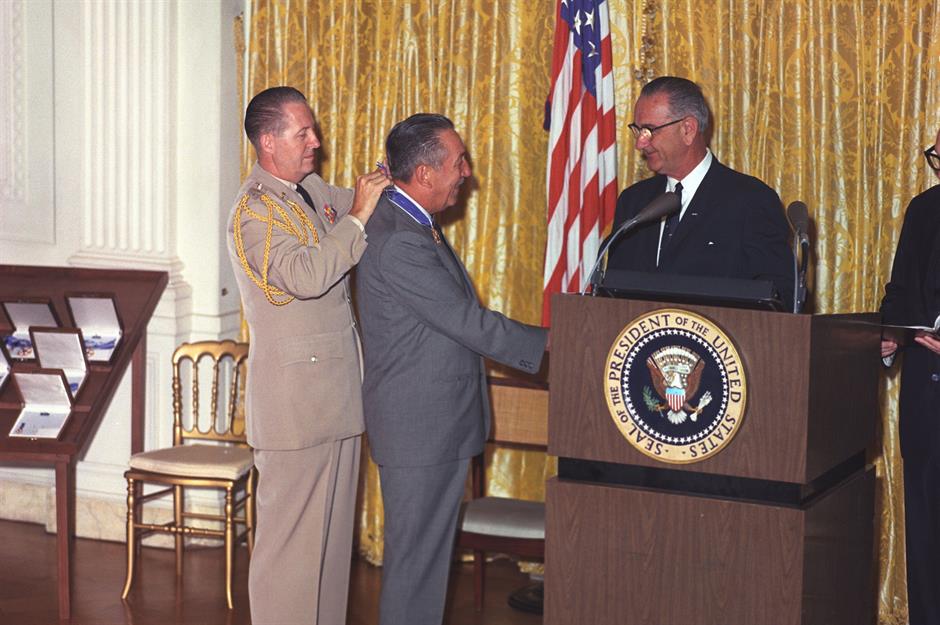
Walt got his flowers and then some in the early 1960s. In 1963, he received the prestigious George Washington Medal of Honor. It was presented to him by former president Dwight D. Eisenhower, who hailed the visionary for being an ambassador of freedom for America, “communicating the hopes and aspirations of our free society to the far corners of the planet.”
The following year, President Lyndon Johnson bestowed Walt with the Presidential Medal of Freedom.
Walt's untimely passing and fortune
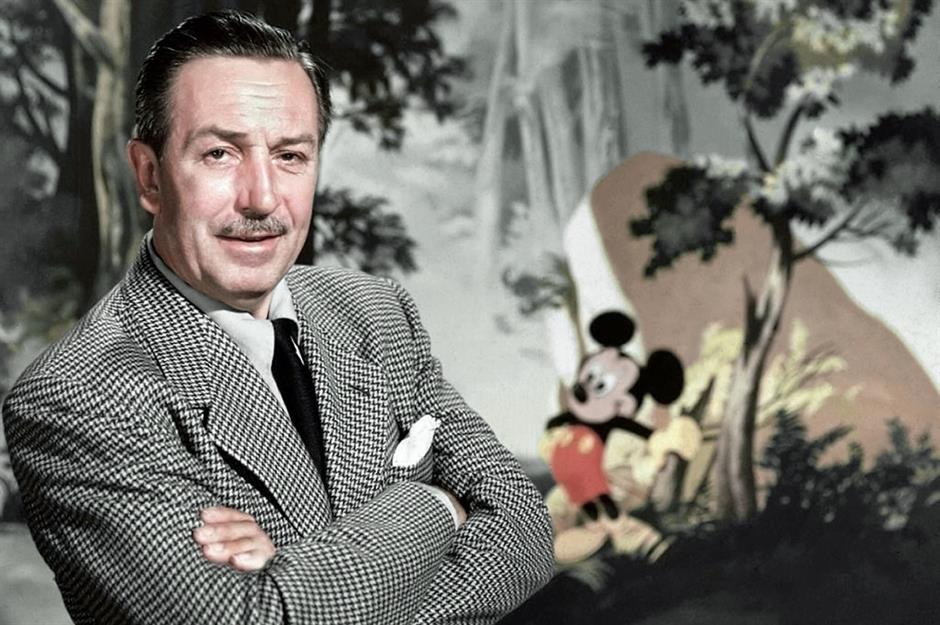
Walt passed away on 15 December 1966 from lung cancer, a consequence of his heavy smoking. He was 65 years old. Sadly, he never saw Disney World completed, with the theme park eventually opening in 1971 and EPCOT in 1982. While Walt's ownership of Disney had diminished over the years – he and Roy reportedly held around 20% of the business by 1960, down from 100% in the early days – he was worth up to a sizeable $150 million ($1.5bn/£1.1bn today).
Walt's wife Lillian and daughters Diane and Sharon were his primary heirs. The sisters played key roles, preserving their father's legacy. Diane, for instance, helped set up the Walt Disney Family Museum. But the Disney family, including Roy's heirs, own very little of the company these days, with their stake amounting to less than 3%.
Walt's complicated legacy
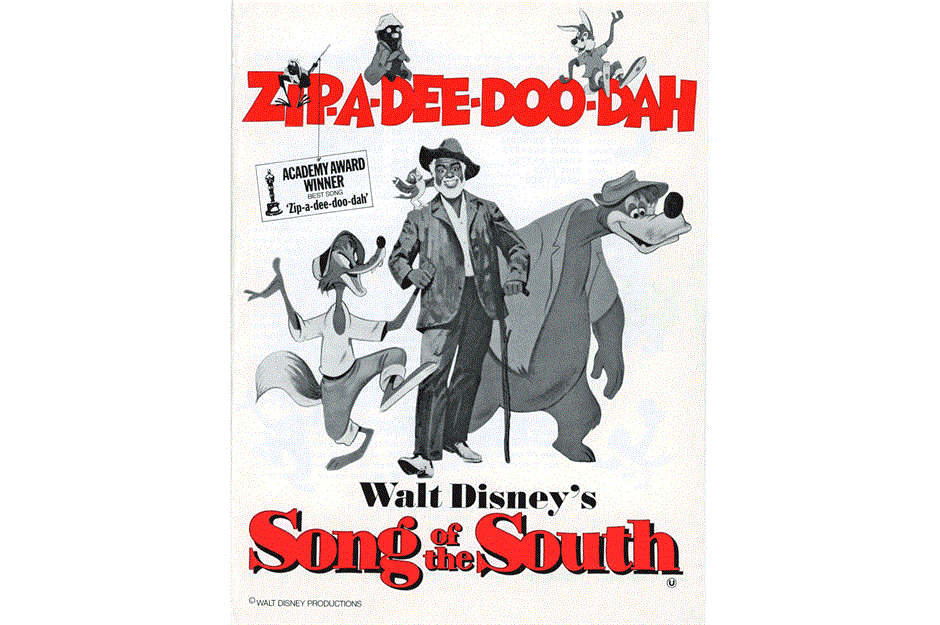
Walt remains a towering figure, celebrated globally as a perfectionist visionary whose creative genius brought joy and wonder to countless millions. His life's work truly transformed entertainment.
Yet a complete understanding of his immense impact also requires acknowledging the complex controversies associated with his legacy. These include accusations of racism and the use of stereotypes in films such as 1946's Song of the South, debated claims of antisemitism and his staunch anti-union stance, notably during the 1941 animators' strike. He also attracted criticism for sexist portrayals and hiring practices in the early days of Disney.
Disney after Walt
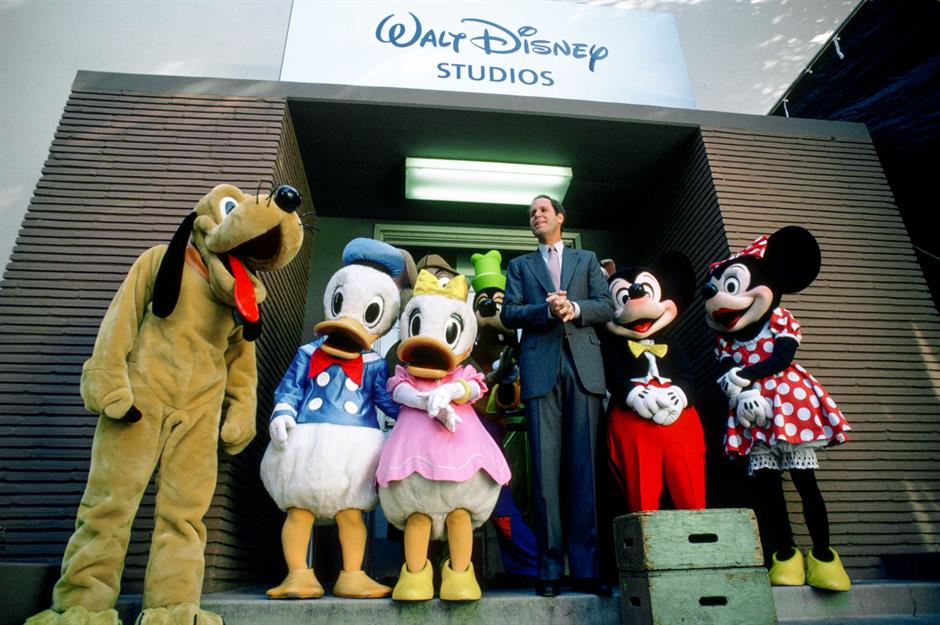
Disney's profits flagged following Walt's death, and the business didn't get its mojo back until the 1980s and 1990s under CEO Michael Eisner (pictured). He led an international theme park expansion and spearheaded the Disney Renaissance when the studio's animated features returned to critical and commercial success.
Bob Iger took the reins in 2005 and has remained at the helm, bar a two-year gap from 2020 to 2022. Under his leadership, Disney has become a major entertainment conglomerate, having acquired Pixar, Marvel, Lucasfilm and 21st Century Fox.
Disney today
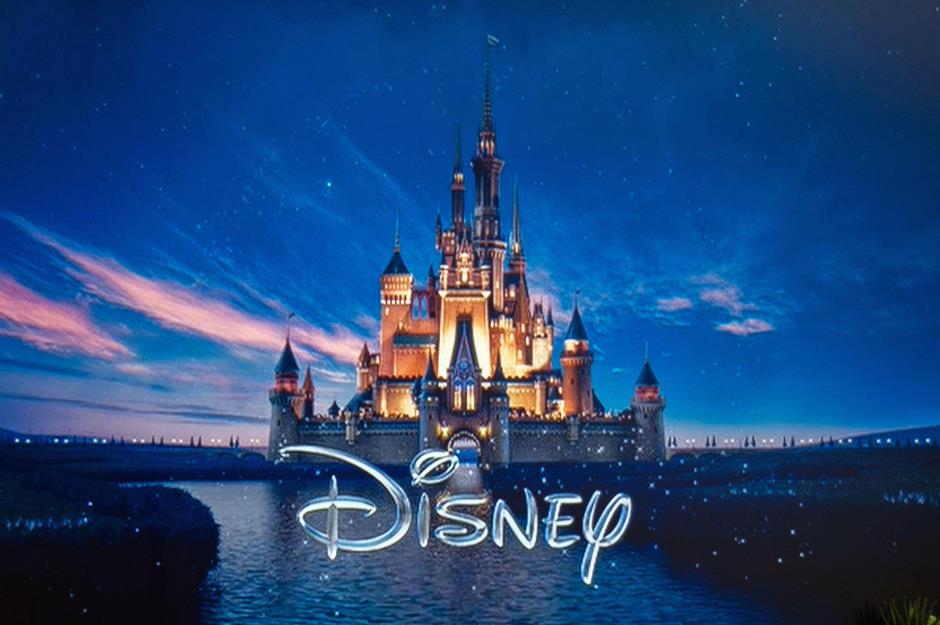
Boasting an annual turnover of over $91 billion (£67bn), the Walt Disney Company now encompasses media networks from ABC to National Geographic, a formidable studio entertainment division, a thriving Parks, Experiences and Products segment, and a flourishing streaming business.
From sketching cartoons as a boy in Missouri to building a media and entertainment juggernaut, Walt Disney didn’t just dream big: he proved how a humble cartoonist could, quite literally, change the world.
Now discover the highest-grossing film franchises of all time
Comments
Be the first to comment
Do you want to comment on this article? You need to be signed in for this feature